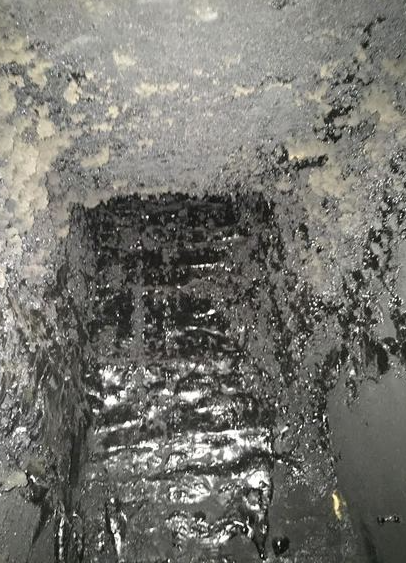The Menace of Creosote in Your Chimney: A Potential Fire Hazard: As the weather turns colder, many of us look forward to cozy nights by the fireplace, basking in its warmth and ambiance. However, amidst the joys of winter fires, there lurks a hidden danger – creosote. Creosote, a byproduct of burning wood, poses a serious threat to the safety of your home and should not be overlooked. In this blog, we will explore the dangers of creosote in your chimney and the importance of regular maintenance to prevent potential disasters.
What is Creosote?
Creosote is a black, sticky, tar-like substance that forms when wood burns incompletely. It is made up of various chemicals, including carbon, hydrogen, oxygen, nitrogen, and other volatile organic compounds. As the hot gases rise up the chimney and cool, creosote condenses and clings to the inner walls of the chimney.
The Hazards of Creosote:
Fire Hazard: The most significant danger associated with creosote is its highly flammable nature. Over time, creosote buildup can become a thick, hardened layer within the chimney. If ignited by a stray spark or high temperatures, this accumulation can ignite and cause a chimney fire. These fires can be extremely destructive, spreading rapidly to other parts of the house and endangering lives.
Chimney Blockage:
Creosote buildup can obstruct the flue, reducing the chimney’s ability to expel smoke, gases, and combustion byproducts. This can result in poor ventilation, leading to smoke backup into the home and increased exposure to harmful gases like carbon monoxide. In severe cases, the chimney may become completely blocked, forcing smoke and toxic fumes back into the living space.
Increased Risk of Carbon Monoxide Poisoning:
Creosote buildup can compromise the proper functioning of your chimney, leading to incomplete combustion and the production of carbon monoxide (CO). Carbon monoxide is a colorless, odorless gas that is highly toxic and can be fatal in high concentrations. A blocked or poorly functioning chimney can contribute to the accumulation of this deadly gas within your home.
Prevention and Maintenance:
Regular maintenance and professional chimney sweeping are vital in preventing creosote-related hazards. Here are some key steps to safeguard your home:
Annual Inspections:
Schedule an annual chimney inspection by a certified chimney sweep. They will assess the condition of your chimney, identify creosote buildup, and recommend appropriate action.
Regular Sweeping: It is generally recommended to have your chimney swept at least once a year, or more frequently if necessary. Professional chimney sweeps use specialized tools and techniques to effectively remove creosote and ensure proper chimney function.
Proper Burning Practices:
Follow best practices for burning wood, such as using well-seasoned hardwoods, maintaining a hot and efficient fire, and avoiding smoldering or uncontrolled fires that produce excessive smoke and creosote.
Install Carbon Monoxide Detectors:
Install CO detectors in your home near sleeping areas to provide early warning in case of carbon monoxide leaks. Conclusion: The menace of creosote in your chimney should not be taken lightly. It poses a serious fire hazard, compromises air quality, and increases the risk of carbon monoxide poisoning.
Conclusion: The menace of creosote in your chimney should not be taken lightly. It poses a serious fire hazard, compromises air quality, and increases the risk of carbon monoxide poisoning. Regular chimney inspections and professional cleanings are essential to ensure a safe and efficient fireplace experience. By taking preventive measures and staying vigilant, you can enjoy the warmth and comfort of your fireplace while keeping your home and loved ones out of harm’s way.

